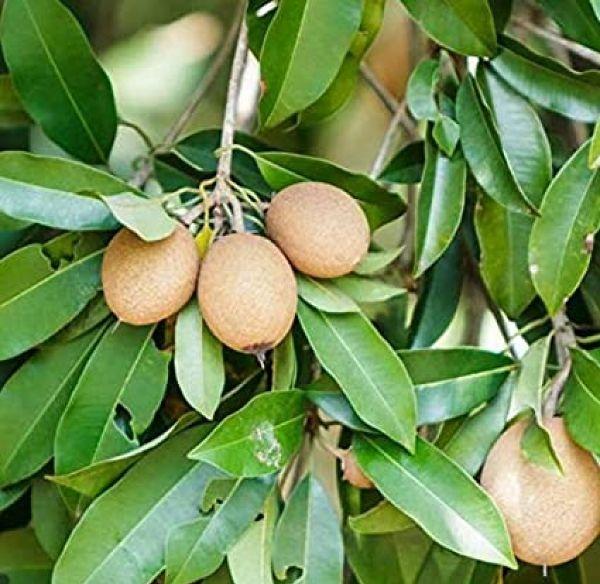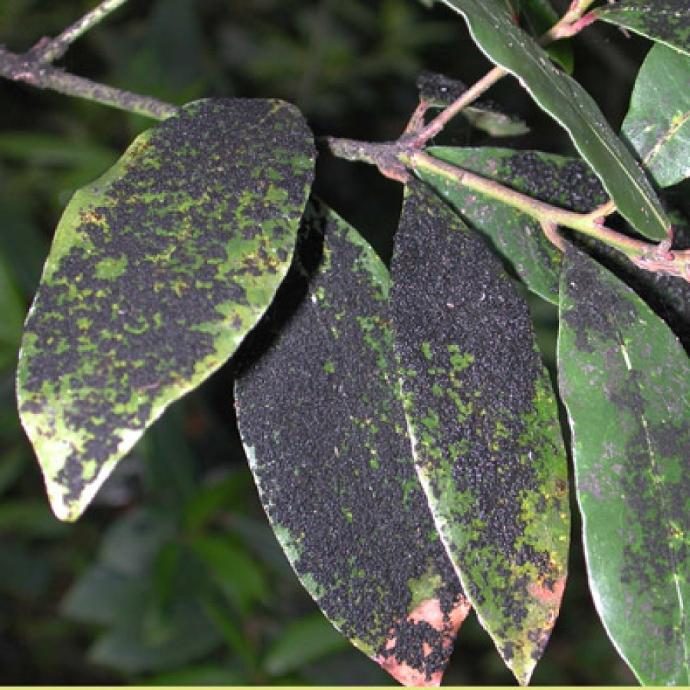Milk Sapota(పాల సపోటా) Plant
Milk Sapota(పాల సపోటా), also known as Manilkara zapota or Chikoo, is an outdoor fruiting tree. Plant in well-draining soil with full sun exposure. Water consistently, especially during dry periods. Pruning can be done to shape the tree and remove crowded or dead branches. Fertilize during the growing season.

Habit
Tree
Height
10 to 15 m
Growth
Fast
Soil
Well-drained, Sandy Loam
Shade
Full Sun
Moisture
Moist
Edible
Yes
Medicinal
Yes
Origin
India, Central America
Climatic Condition
Tropical, Subtropical
Temperature (°)
25°C to 35°C
Humidity (%)
60% to 80%
Potting media
50% Loam, 40% Sand, 10% Organic Matter
Fertilizers
Organic Fertilizer
Watering
Regular watering
Plant Weight
10 to 15 kg
Flowering Time
Spring to Summer
Soil Ph level
6.0 to 7.5
Water Ph level
6.0 to 7.0
Soil EC
0.5 to 1.0 mS/cm
Yield Per Plant
150 to 200 kg per plant
NPK ratio
10:10:10
life Span
30 to 50 years
Health Benefits
Nutrient-dense, Medicinal
Suggested Grow Media or Potting Mix ?
50% loamy soil, 30% compost, 20% sand
Suggested Fertigation/Fertilizers
Fertilize every 4 weeks with a balanced fertilizer.
Common Diseases and Remedies
Sooty mould, anthracnose.
Brownish lesions on fruit and leaves, dark lesions on leaves, wilting.
practicing good garden hygiene and use neem oil .
myclobutanil, sulphur, chlorothalonil follow label instructions apply as recommend.
HEALTH BENEFITS
- Rich in vitamins A and C for skin and eye health.
- Contains dietary fiber for digestion.
- Provides natural sugars for energy.
What Is An Milk Sapota(పాల సపోటా)?
Manilcara sapota, commonly known as sapodilla sapote, chicosapote, chicoo, chicle, naseberry, nispero, or soap apple, is an evergreen tree native to southern Mexico and Central America. An example of its natural occurrence is the coast of the Yucatan Peninsula in the Petenes mangrove ecoregion, where it is a semi-dominant plant species. It was introduced to the Philippines during the Spanish colonial period.

What Are The Different Types Of Milk Sapota(పాల సపోటా)?
1. Para
It is a very popular variety in Andhra Pradesh and Tamil Nadu. Sapota fruits are very small to medium in size, oval or oval, and arranged in clusters.
2. Kirti Bharti
This is a popular variety in Andhra Pradesh. Chiku fruit is medium-sized, oval, and has a rough, thick skin.
3. Balamashi
This variety is popular in Bihar, West Bengal and Uttar Pradesh. Sapota fruits are medium sized and round.
4. Pilipatti
This Sapota variety has unique small fruits found in Maharashtra and Gujarat. These sapota fruits are elongated and have soft, sweet pulp.
5. Gutthi
The fruit of Sapota is small and oval with a broad pointed tip. The pulp is sweet, and the chiku fruit is grown in clusters.

How To Care For Sapota?
1. Location
Zapotas are from tropical America, probably southern Mexico or Central America. Sapota is a hardy perennial tropical evergreen fruit plant that grows up to 1200 meters above sea level. It prefers warm, humid climates and grows in both dry and humid locations.
2. Sunshine
The sapota plant (also known as chiku or sapodilla) requires plenty of sun to grow and bear fruit. Sapota plants are native to tropical regions and are accustomed to lots of sunlight.
3. Soil
Sapota grows in a variety of soils, but deep alluvial soils, sandy loam soils, and well-drained medium black soils with a pH of 6.0 to 8.0 are best for cultivation.
4. Hydration
The water requirement of the Sapota plant is between 10.71 liters per day per plant in winter 34 and 43 liters in summer to meet his 100% water requirement of the Sapota plant will change.

5. Nourishment
Sapota trees require foliar spraying of NPK, Mg, and Zn during fruit ripening to improve fruit size. Application of Nitrophoska 8:12:24:4 (100g/tree) has proven beneficial for the growth of Sapota trees.
6. Issues
The most common pests of fruit and sapota trees are spiders, caterpillars, buds, stem borers, scale insects, mealybugs, lead grasses, and fruit borers.
What Are The Benefits Of Milk Sapota(పాల సపోటా)
These nutrients contribute to a variety of health benefits, including supporting digestion. Strengthening the immune system. Promotes bone health.

FAQs About Growing Milk Sapota(పాల సపోటా)
1. Where can I find the Milk sapota(పాల సపోటా) plant?
Sapota (also known as chiku or sapodilla) is a tropical fruit plant native to Mexico, Central America, and the Caribbean.
2. What are the details of the Milk Sapota(పాల సపోటా) factory?
Sapota (Achras zapota), commonly known as chiku, is cultivated primarily in India for its high fruit value, but in southeastern Mexico, Guatemala, and other countries, it is grown as a latex-derived rubbery substance. It is grown commercially and is primarily used to produce chickpeas. to make chewing gum.
3. Where can I find the Milk sapota(పాల సపోటా) plant?
Sapota (also known as chiku or sapodilla) is a tropical fruit plant native to Mexico, Central America, and the Caribbean.
4. How much sunlight do Milk Sapota(పాల సపోటా) need?
Most sapots plants prefer full sun, but some species can tolerate partial shade. Provide at least 4 to 5 hours of sunlight per day for good growth.
5. What is the Milk sapota(పాల సపోటా) plant used for?
Sapota is a high calorie fruit with 83 calories per 100 grams and is rich in dietary fiber and vitamins. Rich in vitamin A and vitamin C, it helps improve immunity and skin health.

